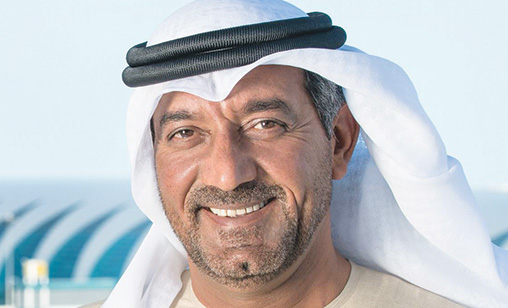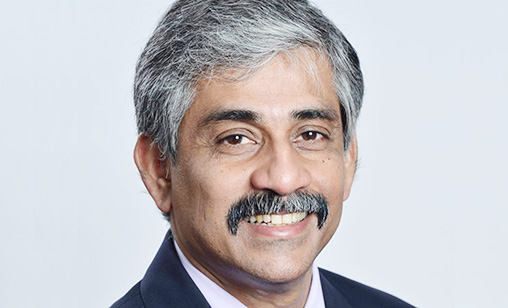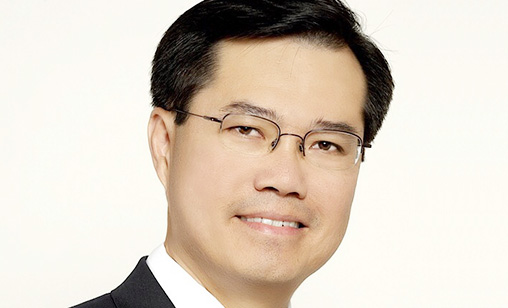Main Story
Travel bugs of travel bubbles
Establishing travel corridors between individual countries are being planned to help restore international air travel to operating strength. But opening “air route bubbles” is complicated and burdened with irritants and costs for travelers. Associate editor and chief correspondent, Tom Ballantyne, reports.
July 1st 2020
Opening a bilateral air bridge between two countries with low coronavirus infection rates appears, on the surface, to significantly assist in the rebooting of international air travel. In reality, these proposed “travel bubbles” are proving near impossible to implement. Read More »
Nervous governments are hesitant to remove the border restrictions designed to protect their citizens from a second wave, or even a third of the COVID-19 pandemic. If agreement is reached between countries to implement travel bubbles, tough rules surrounding clearance for passengers to fly are deterring them from taking advantage of the loosened rules.
 |
An example is Singapore. A COVID-19 travel bubble between Singapore and China has been touted as the first step in restarting trade between the two countries. But it is only for essential travel between Singapore and six cities in China: Shanghai, Guangdong, Tianjin, Chongqing, Jiangsu, and Zhejiang.
At the time of writing, to travel in the travel bubble passengers must be sponsored by a government agency or a company. They will not have to quarantine if they test negative for the virus. But they have to undergo testing before leaving Singapore, be tested on arrival and on departure from China and again after landing in Singapore. China has negotiated a similar regime with South Korea. The rules hardly encourage passengers to rush into booking an air ticket.
Elsewhere in the region, there has been plenty of talk about air corridors being established but very little action. Australia and New Zealand, where infection rates remain extremely low, have been talking for weeks about a travel bubble between the two countries, with no definitive outcome to date.
Singapore, along with South Korea and Canada, also has been talking to Australia and New Zealand about separate travel bubbles. In June, India’s aviation regulator said it was considering “individual bilateral bubbles” with the U.S., the UK, Germany and France. If enacted, the rules would allow airlines of each country in the pact to operate international passenger flights. Given the deteriorating pandemic situation in the U.S. and in India, which is one of the hardest hit victims of COVID-19, it seems highly unlikely a deal with the U.S. will eventuate any time soon.
Hong Kong has been trying, unsuccessfully, to create a travel bubble with its neighbouring Special Administrator Region, Macau. Japan has been discussing mutual removal of restrictions with Thailand and Australia. Hawaii has said it wanted to open routes to Australia, a major source of its tourism dollars. Taiwan eased restrictions for foreigners from June 29, but not if they are tourists. And 14-day quarantine upon arrival remains mandatory.
Indonesia hopes it can open its tourist magnet of Bali to Thailand, Myanmar and Vietnam under new health protocols and there has been talk of a potential travel bubble between all the nations of Southeast Asia.
 |
At the turn of the month, Thailand opened its international borders to individuals in 11 categories including Thai nationals, spouses, children and parents of Thai nationals, non-Thais on work or retirement visas, guests of the country’s government, diplomats and military and emergency services personal and students of educational institutions.
There also has been a great deal of activity in the Middle East, where Gulf carriers, Emirates Airline and Qatar Airways, are leading the return of grounded aircraft to service.
Emirates is boasting of connections through its home hub of Dubai to 40 cities, including many in the Asia-Pacific. New protocols in the United Arab Emirates (UAE) allow international visitors to Dubai but they must undergo stringent health checks and have COVID-19 insurance.
“We are confident the multi-layered measures put in place in the air, on the ground and throughout our city enable us to mitigate risks of infection spread and manage any required response effectively. We believe cities around the world are conducting ongoing reviews and will soon follow suit to update their border entry requirements for international travellers,” Emirates chairman and chief executive, Sheikh Ahmed bin Saeed Al Maktoum, said.
“The next few weeks will be a big test for the whole aviation industry in many ways. At Emirates we see a positive trend of traffic building up across our network in past weeks and we are ready to serve our customers.”
 |
However, in the words of Association of Asia Pacific Airlines (AAPA) director general, Subhas Menon, “people are talking a lot about travel bubbles, but I only see one in existence - in the European Union. It has removed all cross-border travel restrictions. The other bubbles are yet to come to fruition”.
Menon believed China, Japan, South Korea, Hong Kong, Taiwan, Singapore, Malaysia, Australia, New Zealand, Vietnam, Thailand and the Philippines are the most likely candidates for genuine travel bubbles as they have fewer travel restrictions and most of them are reporting lower incidences of COVID-19. Not only must travel restrictions be lifted, but quarantine requirements must be removed, he said.
Overall, the international travel situation is proving to be a tough nut for the International Air Transport Association (IATA), the AAPA and their airline members to crack. Airlines want the lifting of all restrictions to be coordinated on a global scale. The International Civil Aviation Organization (ICAO) has published a recommended system of health checks and layers of protection, but there are indications that the hoped for coordinated approach is far from synchronized in adoption.
The primary stumbling blocks to bubbles, let alone a more general opening of international flights, are quarantine periods and border closures. In the Asia-Pacific alone, countries whose international borders remain closed to international tourists – operating flights are essential air cargo or passenger services bringing citizens home – include India, Myanmar, Thailand, Laos, Vietnam, Hong Kong, Australia, New Zealand, Indonesia, Malaysia and the Philippines. China has recently re-introduced restrictions for entry following a fresh outbreak of the coronavirus in its capital, Beijing. The Australian government has talked about the possibility its international borders could remain closed until late 2021.
Quarantine rules are the second major deterrent to travel. Many countries still insist on a two-week quarantine period for arriving passengers. That dictum, IATA said, is a killer. The association’s director general and CEO, Alexandre de Juniac, said last month a recent public opinion poll showed 83% of respondents would not consider travelling if quarantine was imposed on them at their destinations. An analysis of trends during the lockdown period revealed countries that imposed quarantine experienced a drop in arrivals of more than 90%; an outcome similar to countries that had banned foreign arrivals altogether.
| Travel bubbles a solution? ‘Travel corridors or travel bubbles could be a very good instrument to restart operations between two countries or two airports or locations, but it should be temporary and then we should go back to normal operation. These bubbles should not become permanent otherwise it will be extremely difficult to manage different types of corridors. The complexity would be enormous. Secondly, it would be difficult, when the situation returns to normal, to dismantle these corridors and go back to a normal situation’ International Air Transport Association June 2020 |
It is hard to criticize governments for such measures, given fears of a resurgence of the virus. Australia is an example. Although there has been a spike in cases in the state of Victoria, in the country’s major gateway of Sydney there are extremely low numbers of COVID-19 sufferers and nearly all of them are travellers returning from overseas.
It is clear bubbles, wherever they may be implemented, are largely being confined to essential business and official travel or are returning expatriates home. Singapore Airlines (SIA) has confirmed a limited number of two-way transit channels through Changi Airport, which allow SIA and SilkAir customers to book return journeys between approved destinations.
Passengers only can travel with SIA group carriers and their connection in Singapore must be no longer than 48 hours. The group’s regional vice president South West Pacific, Philip Goh, said the expansion of transit channels to two-way transit between selected points would provide more opportunities for Australians and New Zealanders who need to travel to do so, including those overseas who are returning home.
“These channels are not about booking an overseas holiday as Australia and New Zealand’s borders remain closed to non-citizens. They provide the ability for Aussies and Kiwis, who are overseas in the approved markets in China, Hong Kong, Japan and South Korea to travel with the Singapore Airlines Group through Changi Airport and return home in a COVID-19 safe manner,” Goh said.
 |
It is likely this model of limited air bubbles will become more common over time.
Until its announcement on June 29 that it would open its international borders to 11 categories of travelers, Thailand’s attitude to bubbles was typical of the region. The country’s Centre for COVID-19 Situation Administration (CCSA), said the nation was in “no rush” to open up travel bubbles as more thought was needed about the implementation of the practice.
IATA wants a layered approach to combating the virus. It supports reducing the risk of imported cases by discouraging symptomatic passengers from travelling, implementing health risk mitigation measures, such as screening via non-intrusive temperature checks, and providing Covid-19 testing for travellers from countries perceived to be “higher risk”.
The association recommends testing before passengers arrive at their departure airport to ease airport queues and avoid potential contagion. Test data would need to be independently validated to be mutually recognized by governments and securely transmitted to the authorities.
In cases where an infected person does travel, IATA said there should be universal implementation of the Take-off guidelines published by ICAO including mask-wearing during the travel process, sanitization, health declarations and social distancing where possible.
Measures should be backed up by contact tracing for individuals detected as infected with the virus after arrival.
“We say two things to governments,” de Juniac said in June. “We understand you don’t want to re-import COVID-19 and you want to control the travellers potentially being infected. If you implement the multi-layer approach of ICAO’s worldwide guidelines it should significantly reduce the risk of transmitting infection either on board or from country A to country B. Finally, we say we should discourage people with symptoms to travel.”
| It’s complicated Australia is a perfect example of the complications the resumption of airline operations could produce when restrictions are lifted. The national government has barred entry to all foreign visitors into the country allowing Australian citizens to return home but also requiring them to hotel quarantine for 14 days. Even at a domestic level, a return to full schedule flying is awash with problems. Australia has a federal system and its different States are laying down their own rules with the result the nation has turned into a collection of separate countries when it comes to COVID-19 mitigation measures. The various rulings make schedule planning for Australian-headquartered airlines, Qantas, Jetstar and Virgin Australia, extremely difficult. Qantas Group, including LCC subsidiary, Jetstar, intends to increase their domestic capacity from 5% to 15% at press time and hopefully to 40% by July 31. The increased flying schedule is dependent on the timing of each state’s relaxation of border closures. Hopes for a relaxation of international travel bans are even gloomier. Australia’s federal health minister, Greg Hunt, has strongly hinted international flying may not be able to resume until a COVID-19 vaccine is found – and when that will be is still guesswork. |
MOROZOV STEPANOVICH says:
July 28th 2020 07:18am